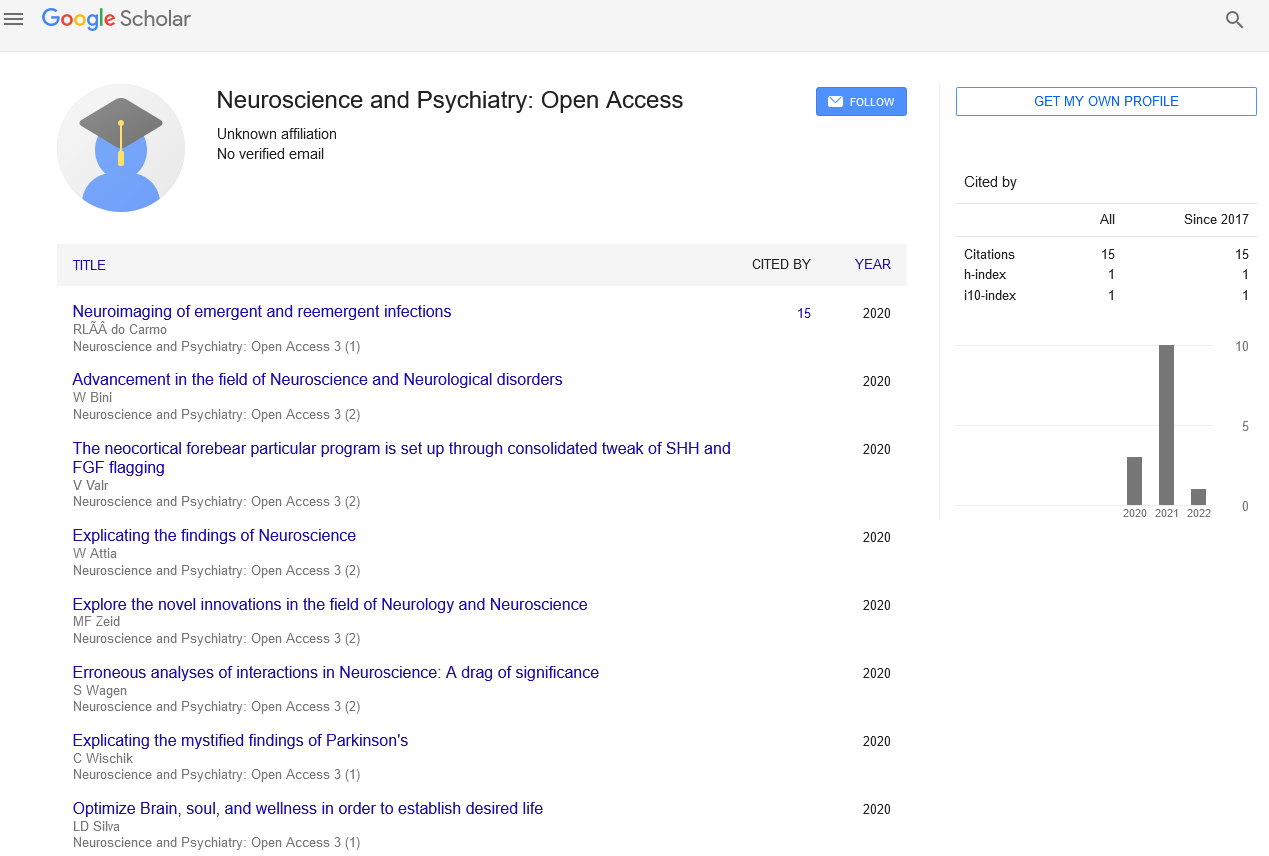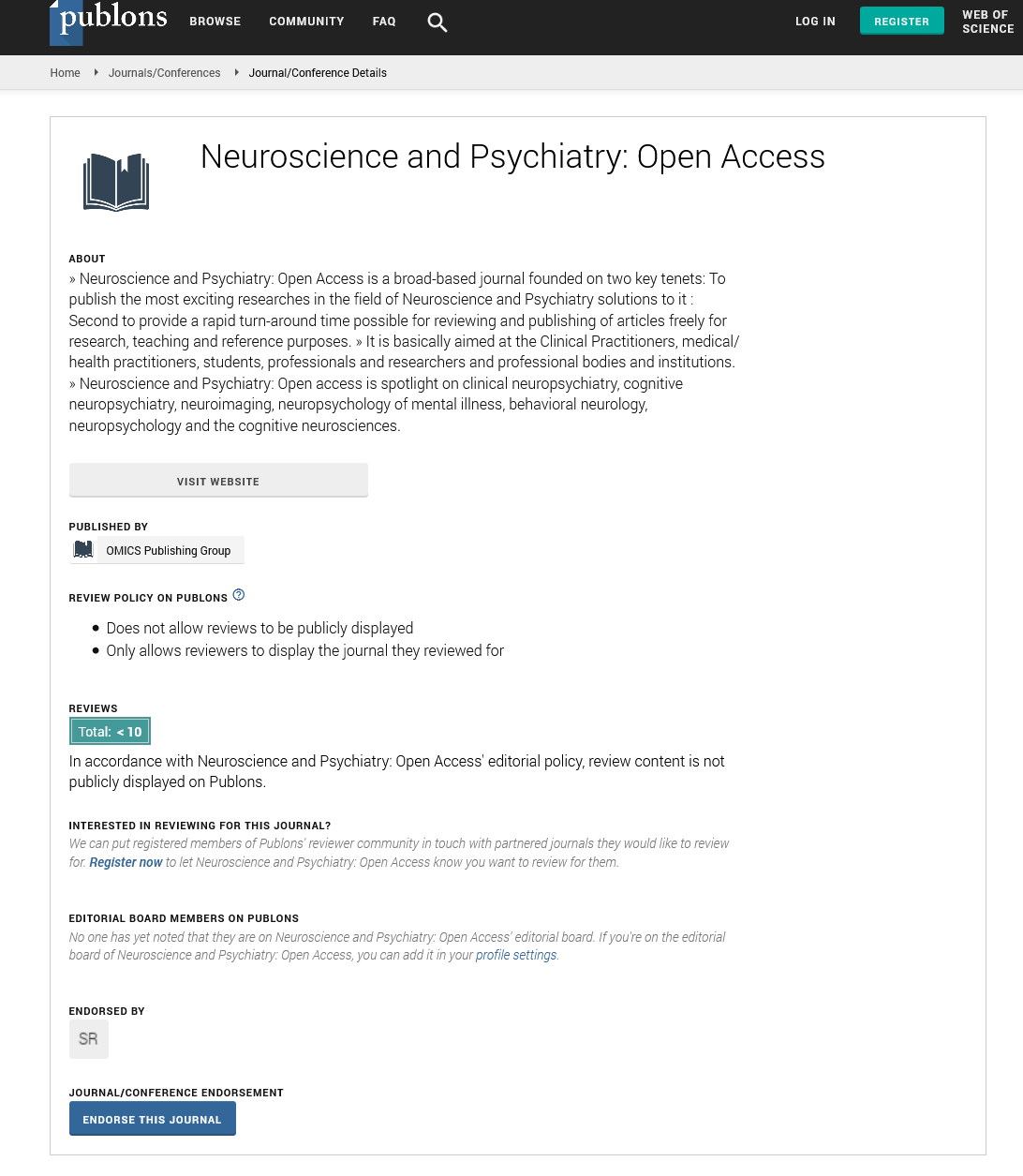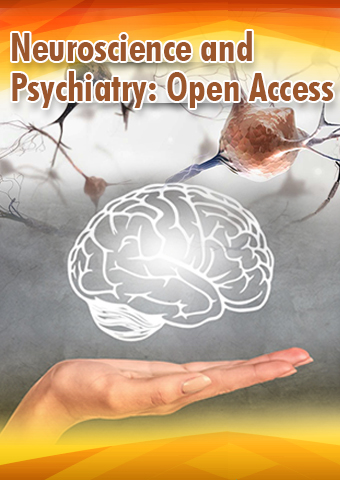Editorial - Neuroscience and Psychiatry: Open Access (2023) Volume 6, Issue 3
Decoding the Enigmatic Nature of Autophagy-Related Diseases: Exploring the Intricacies of Cellular Self-Destruction and Paving the Path to Therapeutic Breakthroughs
Ying Qiu*
Department of Computer Science, Engineering College, University of Bhutan
Department of Computer Science, Engineering College, University of Bhutan
E-mail: yingq@gmail.co.in.edu
Received: 02-06-2023, Manuscript No. npoa-23-101778; Editor assigned: 05-06-2023, Pre QC No. npoa-23-101778; Reviewed: 19- 06-2023, QC No. npoa-23-101778; Revised: 23-06-2023, Manuscript No. npoa-23-101778 (R); Published: 30-06-2023; DOI: 10.37532/ npoa.2023.6(3).56-58
Abstract
Autophagy, a fundamental cellular process, has garnered significant attention in recent years due to its role in various pathological conditions. Autophagy-related diseases encompass a diverse array of disorders, ranging from neurodegenerative diseases to cancer and metabolic disorders. Understanding the intricate mechanisms and regulation of autophagy is crucial for deciphering the enigmatic nature of these diseases and identifying potential therapeutic targets. This review aims to explore the multifaceted aspects of autophagy-related diseases and shed light on the complex cellular self- destruction process. We delve into the molecular machinery and signaling pathways governing autophagy, highlighting the key players involved in the initiation, elongation, and termination phases. Additionally, we discuss the crosstalk between autophagy and other cellular processes, such as apoptosis and inflammation, emphasizing their interplay in disease pathogenesis. Furthermore, we examine the dysregulation of autophagy in various disorders, elucidating how defects in autophagy contribute to disease progression. We provide a comprehensive overview of autophagy-related diseases, focusing on neurodegenerative diseases such as Alzheimer's, Parkinson's, and Huntington's diseases, as well as cancer and metabolic disorders like diabetes and obesity. We discuss the specific molecular and cellular alterations associated with each disease and how they disrupt the autophagy machinery. Lastly, we explore the potential therapeutic avenues for targeting autophagy in disease treatment. We highlight the emerging strategies and experimental approaches, including pharmacological modulators, gene therapy, and novel molecular interventions that aim to restore or enhance autophagy flux in diseased cells. We also discuss the challenges and future directions in the development of autophagy-targeted therapies, emphasizing the need for precise modulation of autophagy to achieve optimal therapeutic outcomes.
Keywords
Autophagy • Autophagy-related diseases • Cellular self-destruction • Pathogenesis • Molecular machinery• Signaling pathways • Dysregulation • Neurodegenerative diseases • Cancer • Metabolic disorders • Molecular alterations • Therapeutic targets • Pharmacological modulators • Gene therapy • Molecular Interventions • Autophagy flux
Introduction
Autophagy, a highly conserved cellular process, plays a vital role in maintaining cellular homeostasis, eliminating damaged or dysfunctional organelles, and recycling intracellular components [1]. It is a tightly regulated mechanism that ensures the proper functioning of cells and their adaptation to various stressors [2]. Dysregulation of autophagy has been implicated in the pathogenesis of a diverse range of diseases, including neurodegenerative disorders, cancer, and metabolic conditions. Understanding the complex nature of autophagy-related diseases is of paramount importance for the development of effective therapeutic strategies [3]. Autophagy, derived from the Greek words "auto" meaning self and "phagy" meaning eating, refers to the cellular process of self-destruction, wherein cellular components are engulfed within doublemembraned vesicles called autophagosomes and subsequently delivered to lysosomes for degradation and recycling [4]. This process serves as a quality control mechanism that eliminates damaged proteins, aggregates, and organelles, thereby preventing the accumulation of toxic material within cells [5]. It also acts as an adaptive response during periods of nutrient deprivation, allowing cells to recycle intracellular components and generate energy to sustain vital cellular functions. The intricate regulation of autophagy involves a complex interplay of molecular machinery and signaling pathways [6]. Key players in the initiation, elongation, and termination phases of autophagy include the mammalian target of rapamycin complex 1 (mTORC1), Beclin-1, Atg proteins, and lysosomal enzymes [7]. Dysregulation or malfunctioning of these components can disrupt the autophagic process, leading to cellular dysfunction and the development of autophagy-related diseases. Autophagy-related diseases encompass a wide spectrum of disorders, each characterized by specific molecular alterations and clinical manifestations [8]. Neurodegenerative diseases such as Alzheimer's disease, Parkinson's disease, and Huntington's disease are marked by the accumulation of protein aggregates and impaired autophagic clearance. Cancer cells often exploit autophagy to survive under stressful conditions, and defects in autophagy can either promote or suppress tumor growth, depending on the context. Metabolic disorders like diabetes and obesity are associated with dysregulated autophagy, affecting insulin signaling, lipid metabolism, and energy balance [9]. Understanding the intricate nature of autophagy-related diseases requires comprehensive exploration of the molecular mechanisms involved. This review aims to unravel the enigmatic aspects of autophagy-related diseases, shedding light on the complex cellular self-destruction process and paving the way for therapeutic breakthroughs. We will delve into the molecular machinery and signaling pathways that govern autophagy, highlighting their significance in disease pathogenesis. Furthermore, we will examine the specific molecular alterations associated with neurodegenerative diseases, cancer, and metabolic disorders, elucidating how dysregulated autophagy contributes to disease progression [10]. The identification of potential therapeutic targets in autophagy-related diseases holds immense promise for the development of novel treatment strategies. Various approaches, such as pharmacological modulators, gene therapy, and molecular interventions, have shown potential in restoring or enhancing autophagy flux in diseased cells. However, the precise modulation of autophagy presents challenges that need to be addressed to achieve optimal therapeutic outcomes. By discussing the emerging strategies and future directions, we aim to provide insights into the development of autophagy-targeted therapies and their potential for therapeutic breakthroughs.
Materials and Methods
This review article focuses on the exploration of autophagy-related diseases and the mechanisms underlying cellular self-destruction. The materials and methods employed in this study include comprehensive literature review, data analysis, and synthesis of information from relevant scientific publications, research articles, reviews, and databases.
Integration and synthesis: The collected data were integrated and synthesized to provide a comprehensive overview of the intricate nature of autophagy-related diseases. Molecular mechanisms, key players, and interplay with other cellular processes such as apoptosis and inflammation were analyzed and presented.
Identification of therapeutic targets: The review focused on exploring potential therapeutic targets for autophagy-related diseases. Information on pharmacological modulators, gene therapy, and molecular interventions aimed at restoring or enhancing autophagy flux was collected and analyzed. Challenges and future directions in the development of autophagy-targeted therapies were also discussed.
Conclusion
Autophagy, the cellular process of selfdestruction and recycling, plays a critical role in maintaining cellular homeostasis and adapting to stressors. Dysregulation of autophagy has been implicated in a wide range of diseases, including neurodegenerative disorders, cancer, and metabolic conditions. In this review, we have delved into the intricate nature of autophagyrelated diseases, exploring the molecular mechanisms underlying cellular self-destruction and paving the path to potential therapeutic breakthroughs. Our exploration of the molecular machinery and signaling pathways governing autophagy has highlighted the complexity of this process. Key players such as mTORC1, Beclin-1, Atg proteins, and lysosomal enzymes have been identified as crucial regulators of autophagy. Dysfunctions in these components can disrupt the autophagic process, leading to cellular dysfunction and disease progression. Furthermore, we have examined the dysregulation of autophagy in specific diseases, including neurodegenerative diseases such as Alzheimer's, Parkinson's, and Huntington's diseases, as well as cancer and metabolic disorders like diabetes and obesity. Molecular alterations associated with these diseases, including protein aggregates, impaired clearance, and disrupted signaling pathways, have been elucidated. These alterations contribute to the pathogenesis of autophagyrelated diseases and highlight the importance of understanding the intricacies of autophagy for effective therapeutic interventions. The identification of potential therapeutic targets in autophagy-related diseases holds great promise. Strategies such as pharmacological modulators, gene therapy, and molecular interventions aim to restore or enhance autophagy flux in diseased cells. However, the precise modulation of autophagy presents challenges that need to be addressed to achieve optimal therapeutic outcomes. Further research is required to develop specific and targeted approaches to modulate autophagy for therapeutic purposes.
References
- Klionsky DJ. Autophagy revisited: a conversation with Christian de Duve. Autophagy. 4,740-3 (2008).
- Caramés B, Olmer M, Kiosses WB et al. The relationship of autophagy defects to cartilage damage during joint aging in a mouse model. Arthritis Rheumatol. 67, 1568-76(2015).
- Kobayashi S. Choose Delicately and Reuse Adequately: The Newly Revealed Process of Autophagy. Biol Pharm Bull. 38, 1098-103 (2015).
- Levy JM, Towers CG, Thorburn A. Targeting autophagy in cancer. Nat Rev Cancer. 17,528-542 (2017).
- Mizushima N, Komatsu M. Autophagy: renovation of cells and tissues. Cell. 147, 728-41 (2011).
- Ashford TP, Porter KR. Cytoplasmic components in hepatic cell lysosomes. J Cell Biol. 12,198-202 (1962).
- Tsujimoto Y, Shimizu S. Another way to die: autophagic programmed cell death. Cell Death Differ. 12,1528-34 (2005).
- Liu K, Czaja MJ. Regulation of lipid stores and metabolism by lipophagy. Cell Death Differ. 20,3-11(2013).
- Jin S, White E. Role of autophagy in cancer: management of metabolic stress. Autophagy. 3,28-31 (2007).
- Hara T, Takamura A, Kishi C et al. FIP200, a ULK-interacting protein, is required for autophagosome formation in mammalian cells. J Cell Biol. 181,497-510 (2008).
Indexed at, Google Scholar, Crossref
Indexed at, Google Scholar, Crossref
Indexed at, Google Scholar, Crossref
Indexed at, Google Scholar, Crossref
Indexed at, Google Scholar, Crossref
Indexed at, Google Scholar, Crossref
Indexed at, Google Scholar, Crossref
Indexed at, Google Scholar, Crossref
Indexed at, Google Scholar, Crossref


